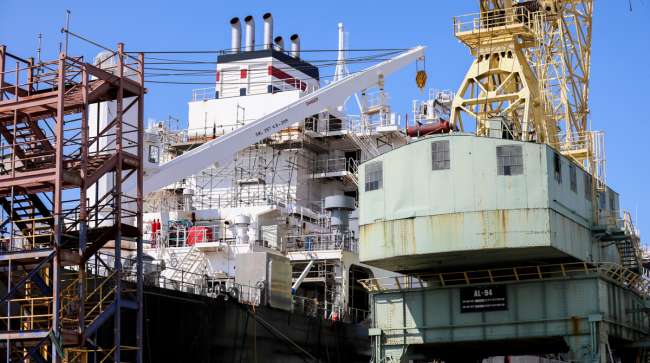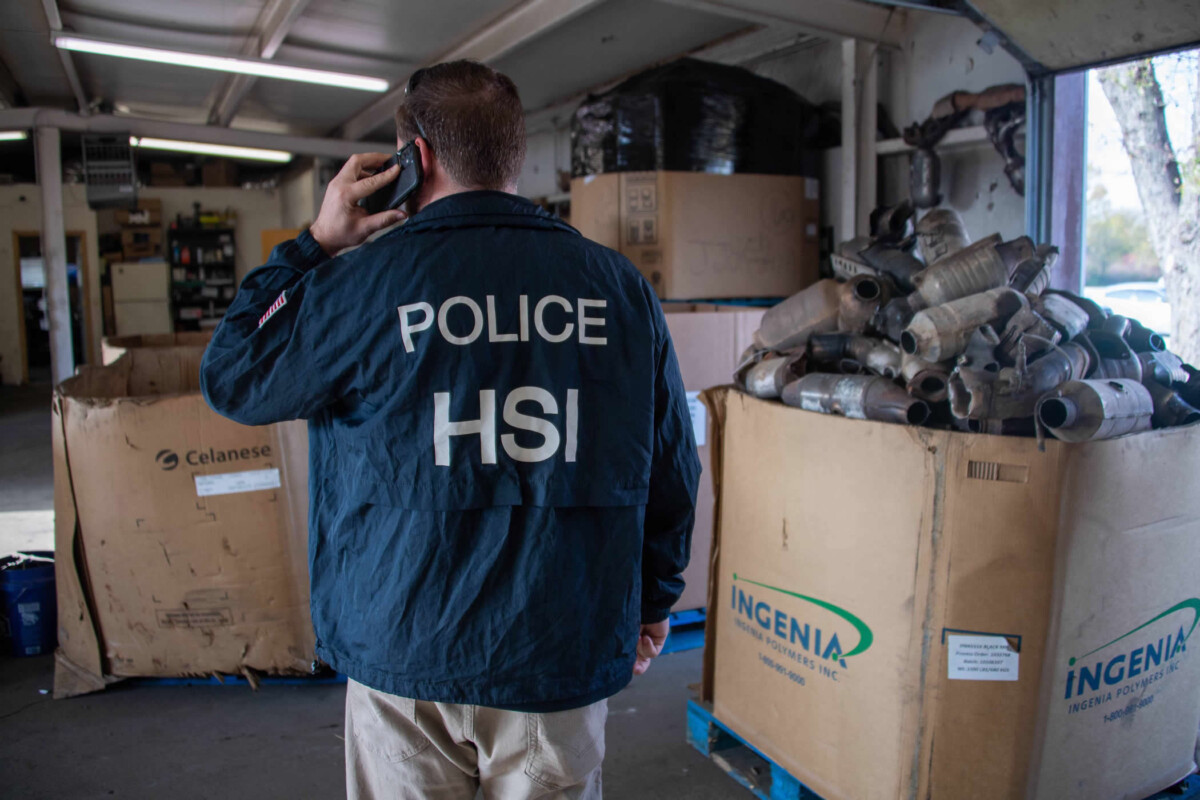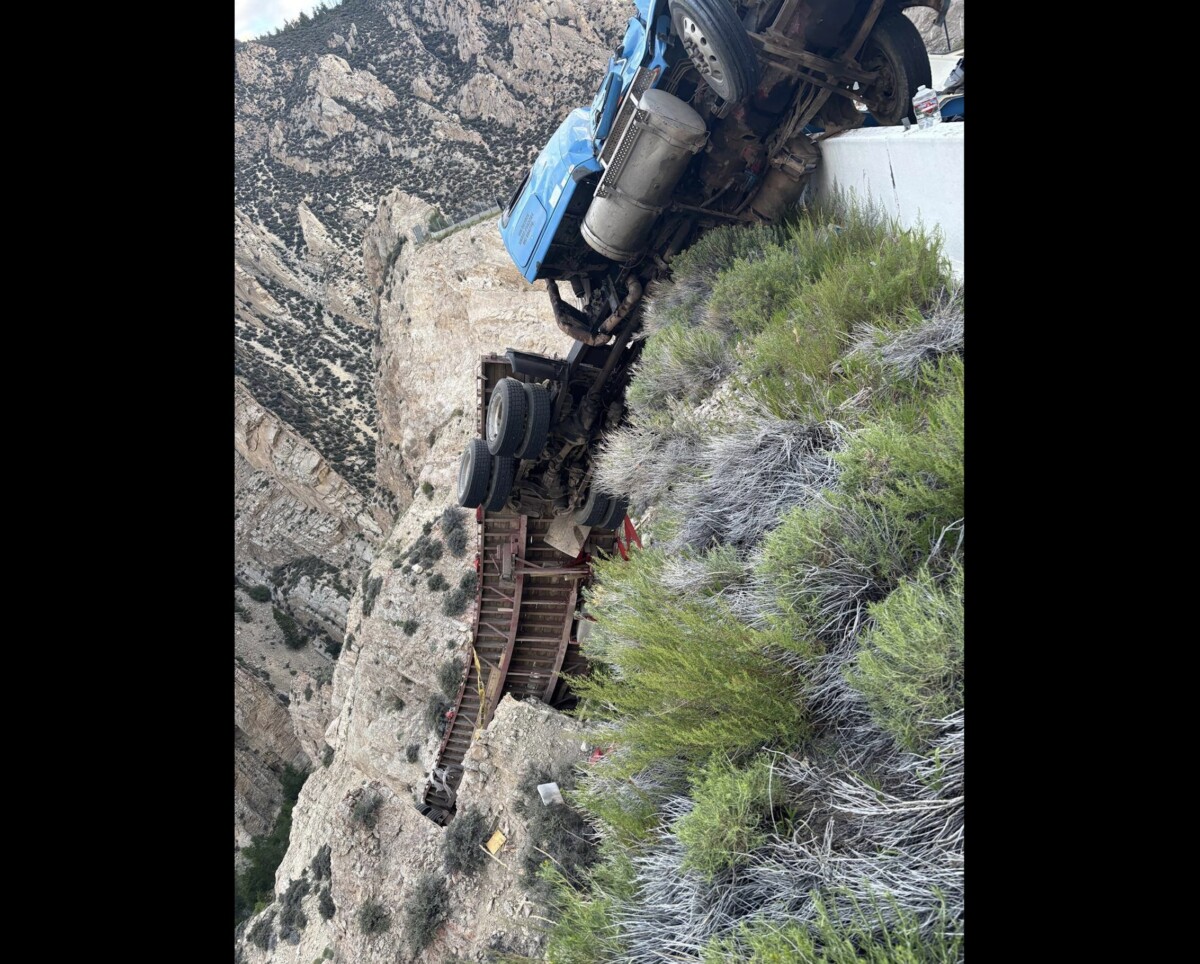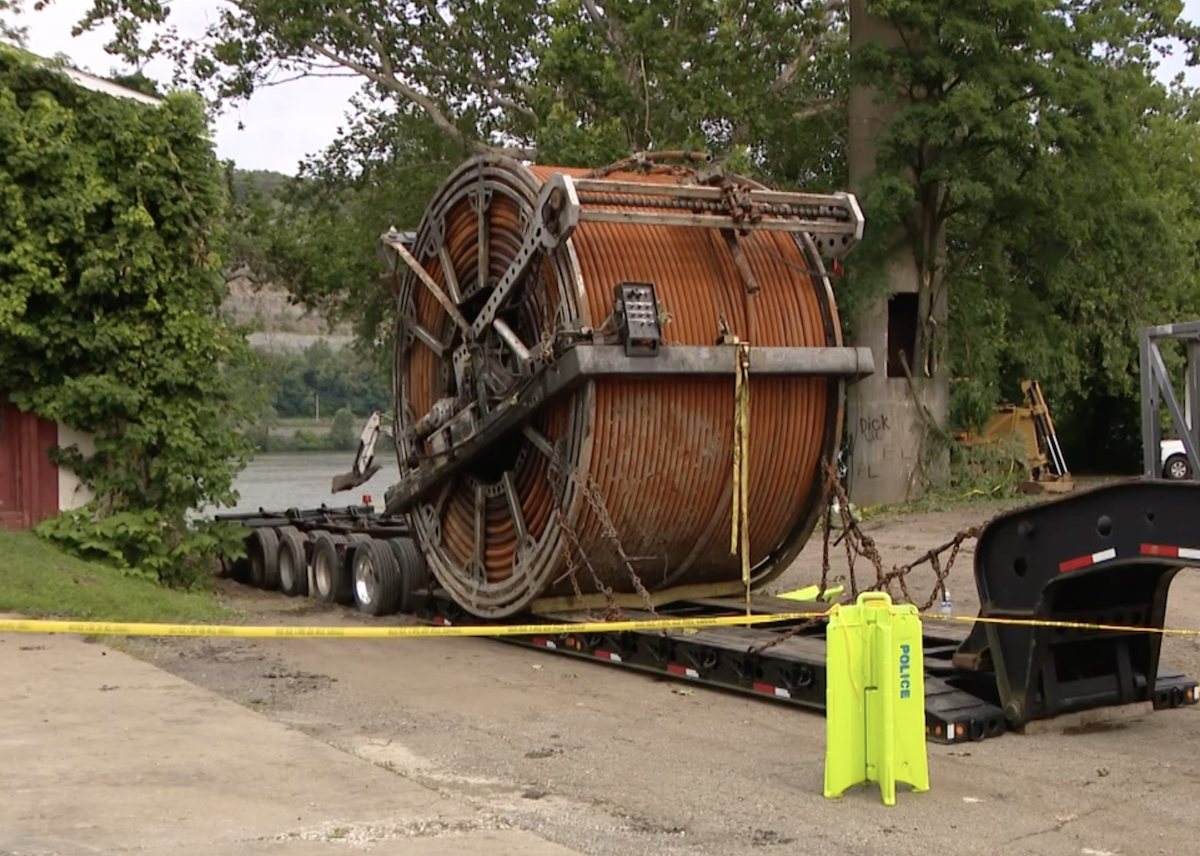The Philly Shipyard in Philadelphia. (Heather Khalifa/Bloomberg News)
President Donald Trump signed an executive order April 9 that seeks to revive U.S. shipbuilding and will dispatch Elon Musk’s efficiency squad to investigate how the U.S. Navy fell so far behind in turning out vessels.
The order is intended to blunt China’s maritime dominance by offering new funding streams to support U.S. shipbuilding, according to a senior White House official who asked not to be identified discussing the document before its release.
It paves the way for tax breaks on investments in “maritime opportunity zones” and directs agencies to study in particular the U.S. presence in the Arctic, the person said.
Challenges over maritime commerce and seagoing defenses have the president’s attention. During his speech to Congress in March, Trump announced a new office of shipbuilding and said the U.S. would be making ships “very fast and very soon.”
The Maritime and Industrial Capacity Directorate is already in place to drive the effort. Leading the seven-person shipbuilding office inside the National Security Council is Ian Bennitt, a former staff director on the seapower panel of the House Armed Services Committee.
China Fees
It won’t be an easy task. In just two-and-a-half decades, China’s shipyards went from turning out less than 5% of the world’s commercial shipping capacity to building more than 50% this year. China’s navy is rapidly growing and it now has a larger fleet than the U.S.
The new executive order dovetails with a proposal by the U.S. Trade Representative to charge million-dollar fees on Chinese-built ships upon entry to a U.S. port. Dozens of commodities exporters and trade groups have warned that the plan will spike the inflation rate, cause major supply chain disruptions and make businesses go belly up overnight.
The order also expands the Harbor Maintenance Fee to include cargo that arrives in Mexico or Canada by ocean before clearing U.S. Customs at an inland location. That addresses a concern raised by West Coast dockworkers, who warned that the tariffs and fees proposed would encourage cargo to flow through Canadian and Mexican seaports instead of U.S. hubs.
The executive order directs the Musk-led Department of Government Efficiency to review past Navy shipbuilding decisions that have led to problems with some major platforms, including the $22 billion frigate program, the official said.

(Bloomberg)
The order also directs the Navy and Coast Guard to conduct a separate, 45-day shipbuilding review that would cover more areas than one conducted under the Biden administration, which disclosed a 12-to-16-month schedule slip in the estimated first delivery of its next-generation nuclear-missile submarine as well as the delays for the frigates and Virginia-class submarines.
The order also directs the administration to develop a strategy to secure Arctic waterways, the official said. Trump has previously called for dozens of “icebreaker” ships to be added to the U.S. fleet, which the official said will eventually be built in the U.S. The order emphasizes that having a U.S. presence in the Arctic quickly is a priority of the president, he said.
Although the USTR’s proposal isn’t finalized, the new order — called Restoring America’s Maritime Dominance, according to the official — offers clues about how the port fees, aimed at curbing China’s dominance of the shipbuilding market, could work to revitalize the American maritime industry instead.
The executive order directs fees and tariffs collected from Chinese-affiliated vessels and cargo-handling equipment such as cranes to create a new revenue stream for investment in domestic maritime industries, the official said. It would also develop cargo preference targets and tax incentives for U.S.-flagged vessels. The goal is to expand the fleet of ships trading internationally that could serve as on-call assets for national security purposes.






